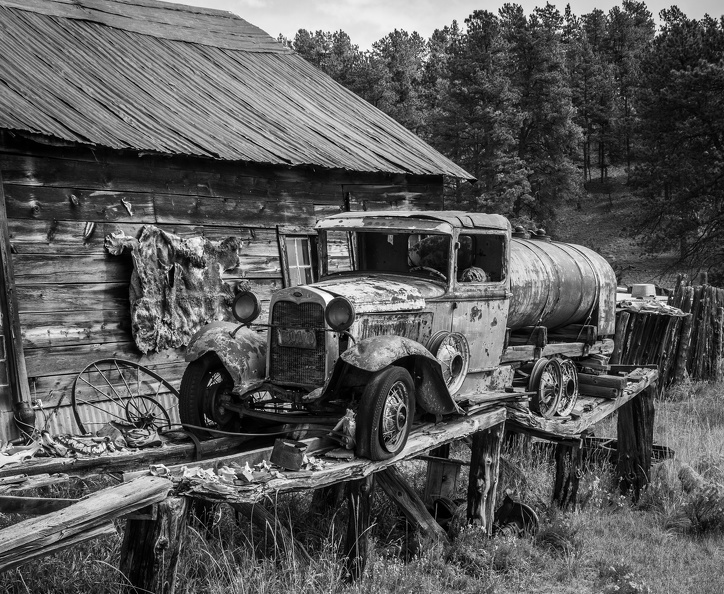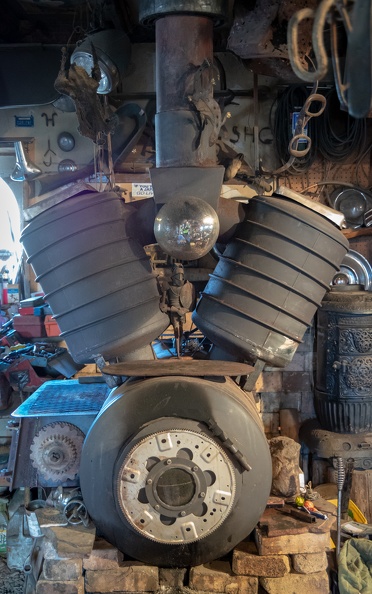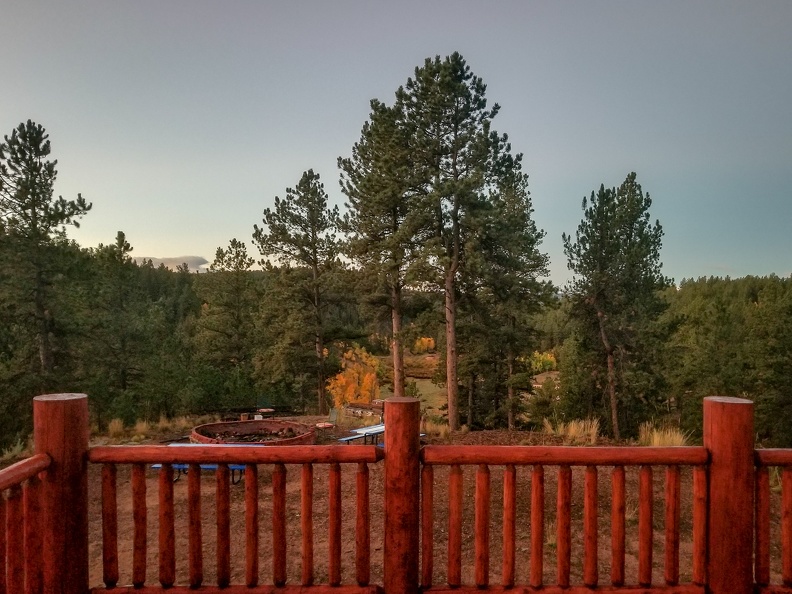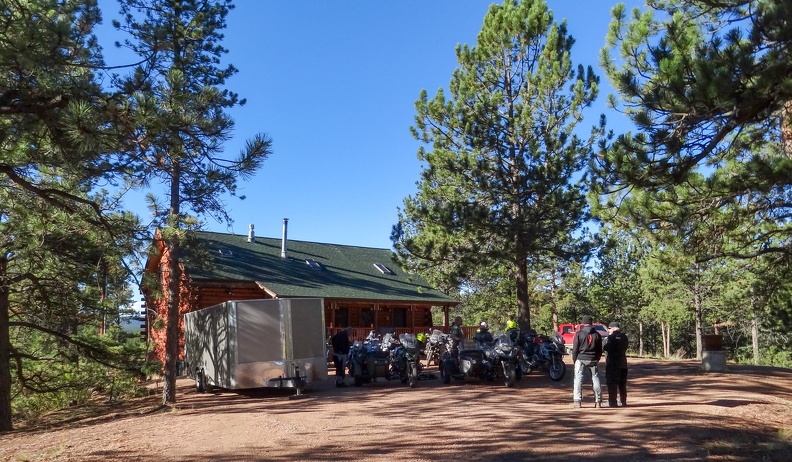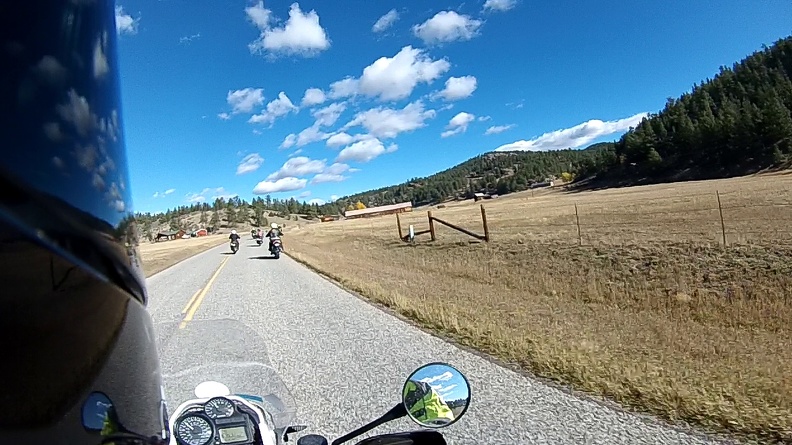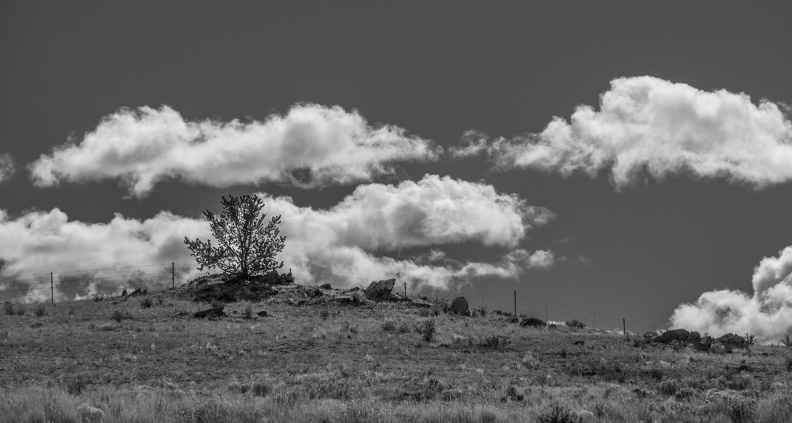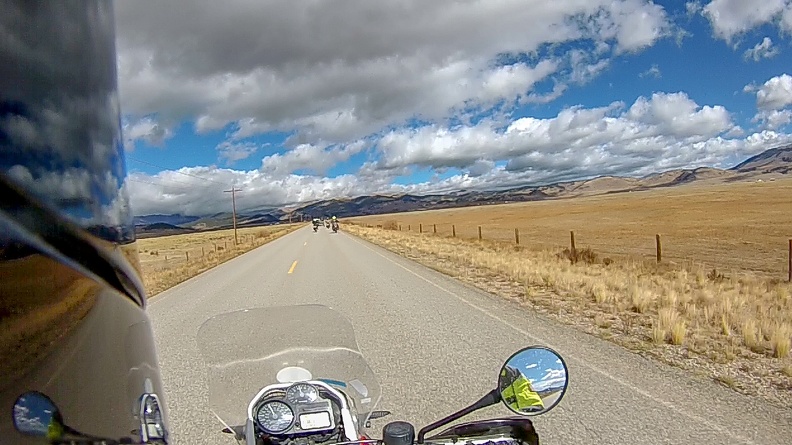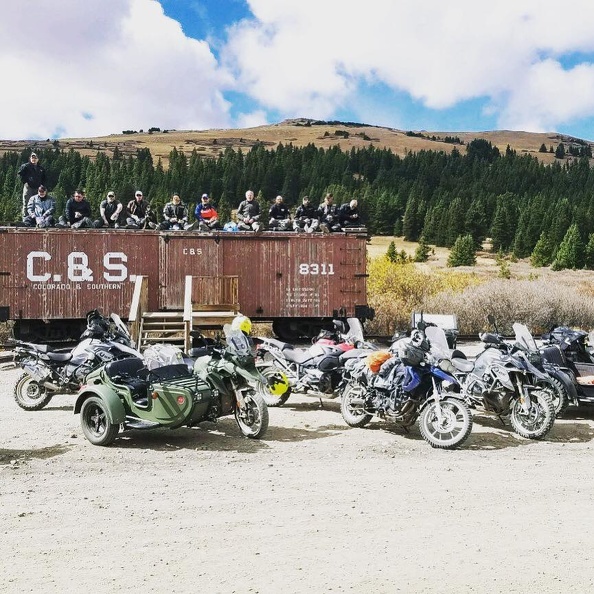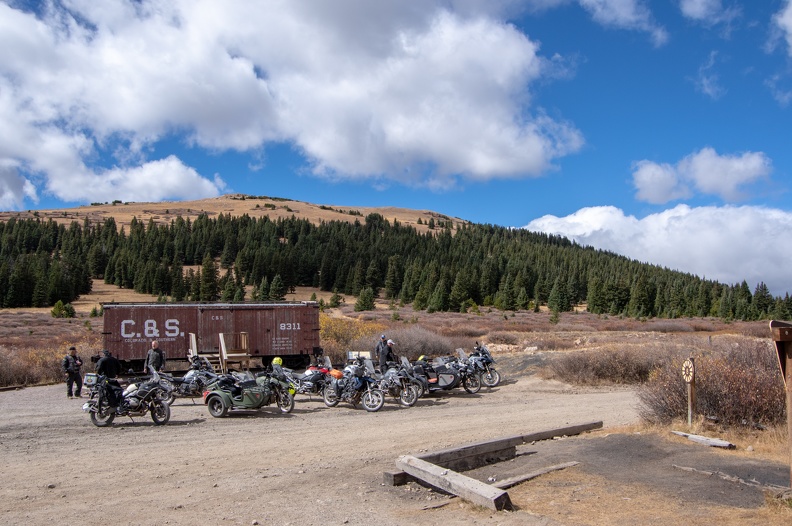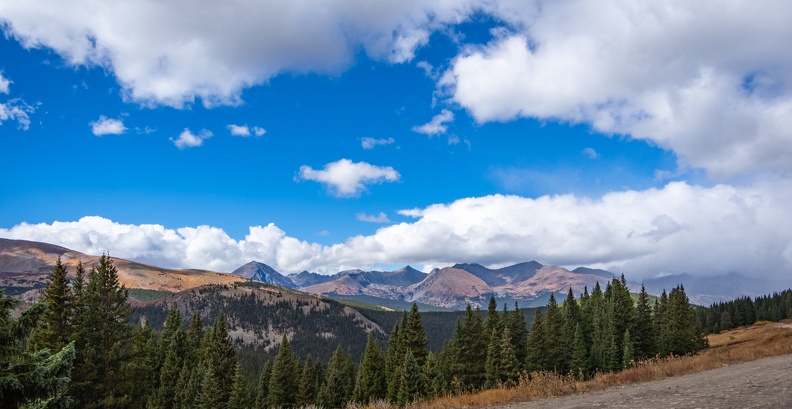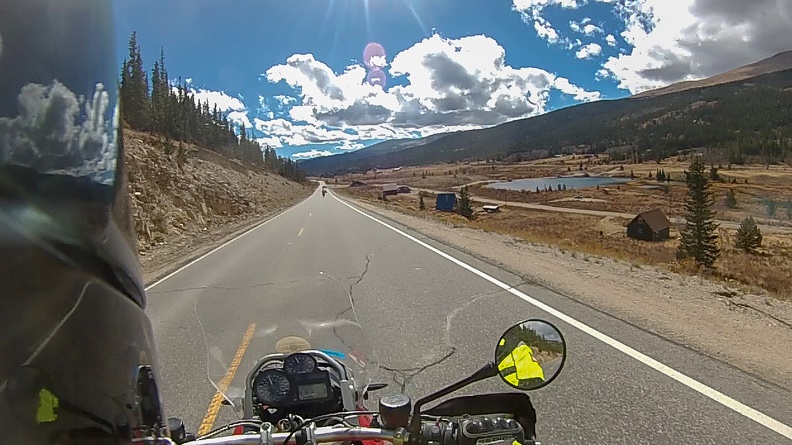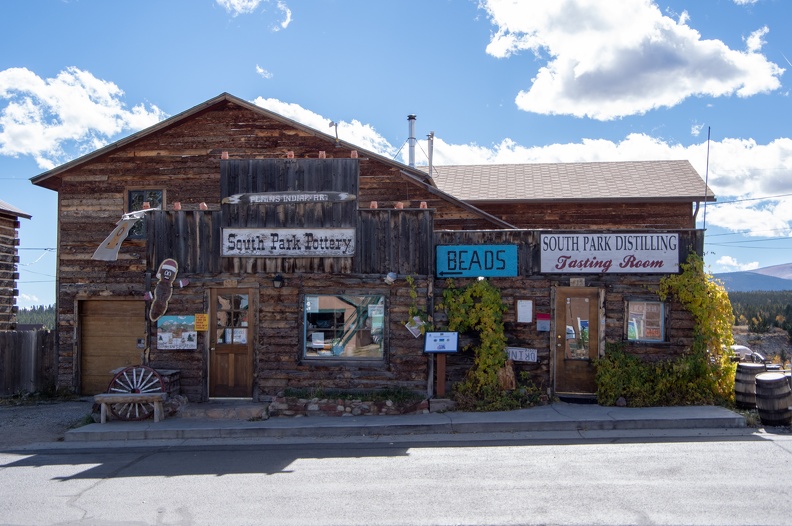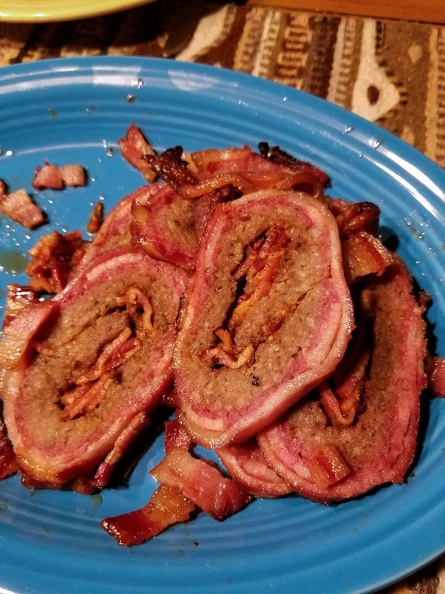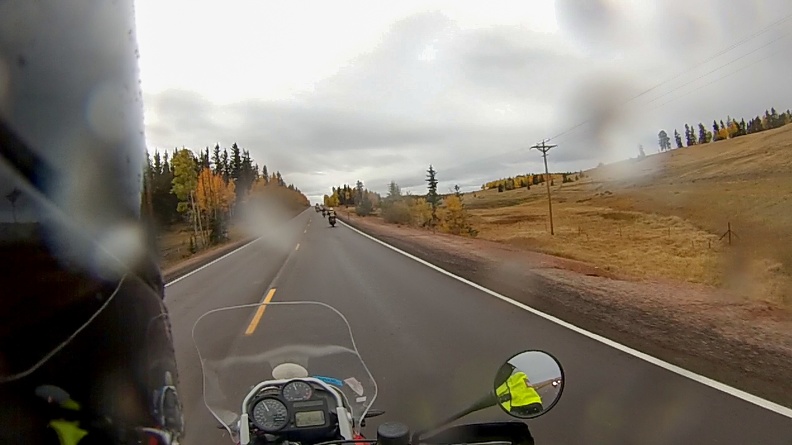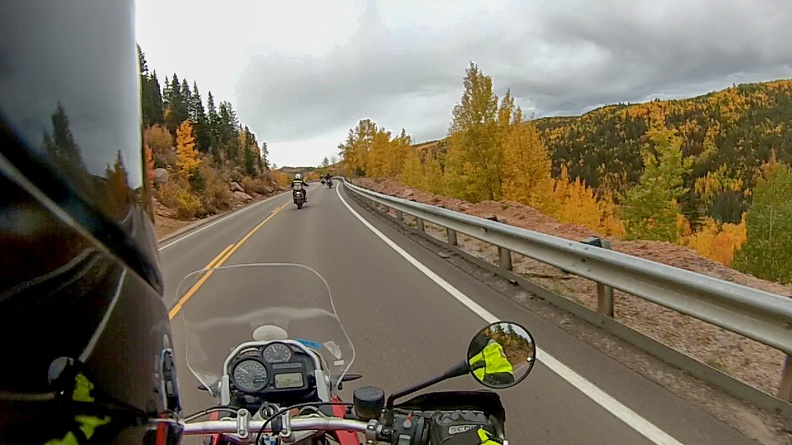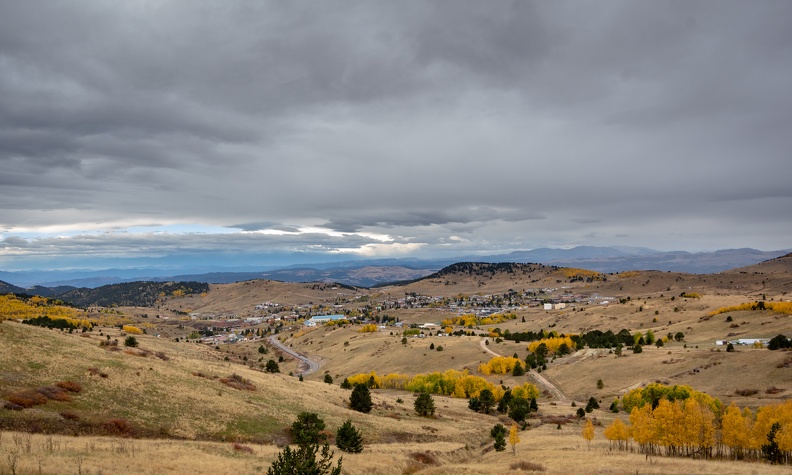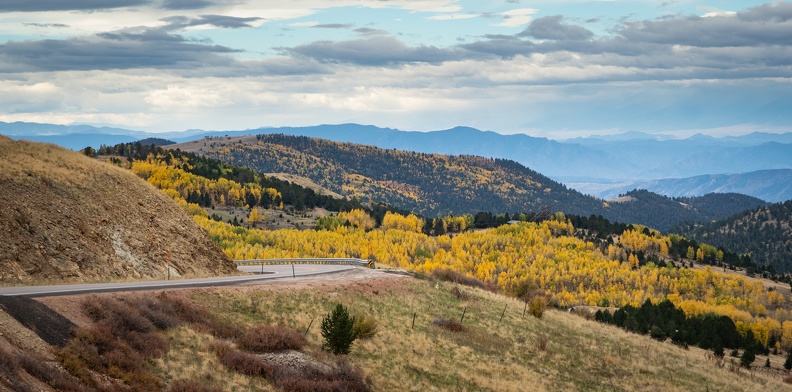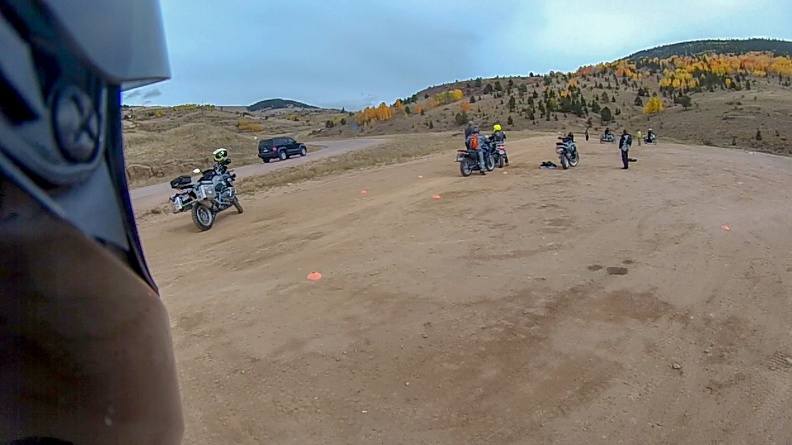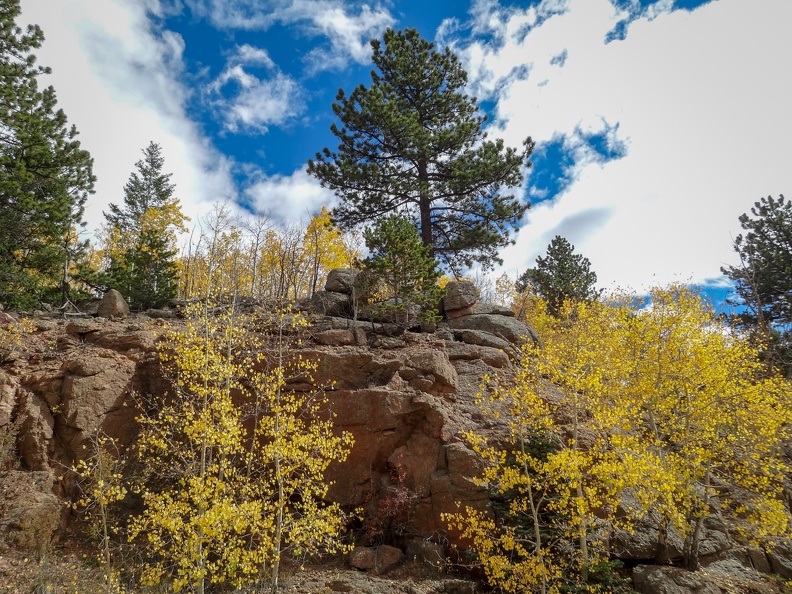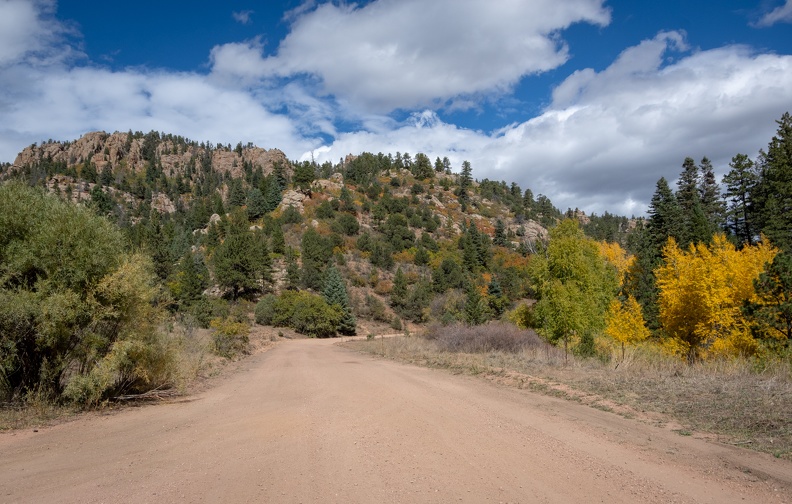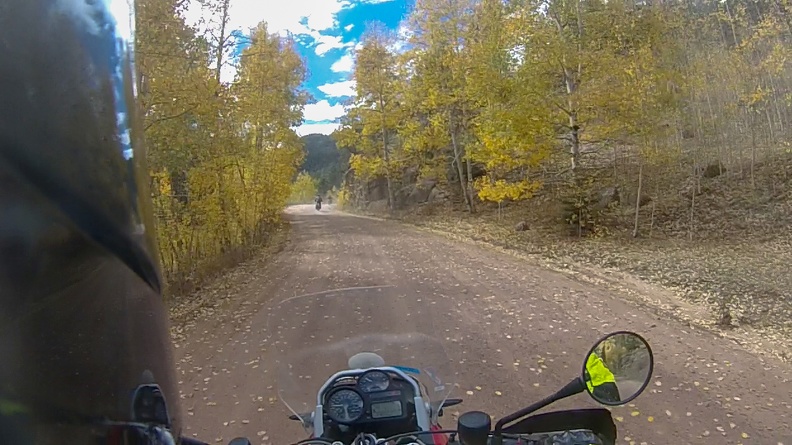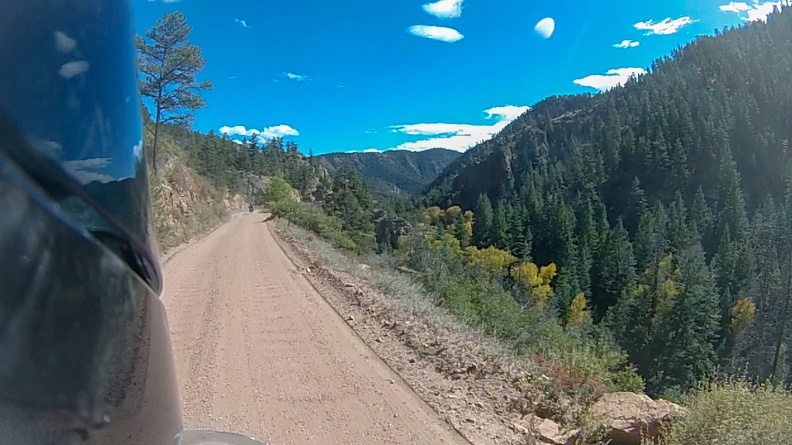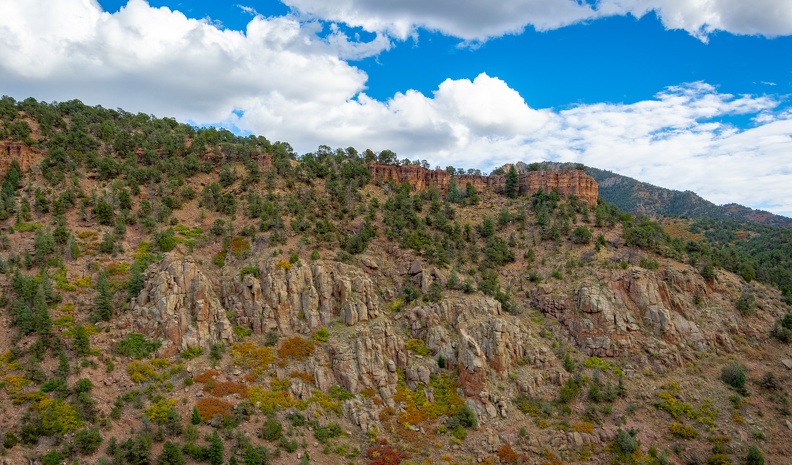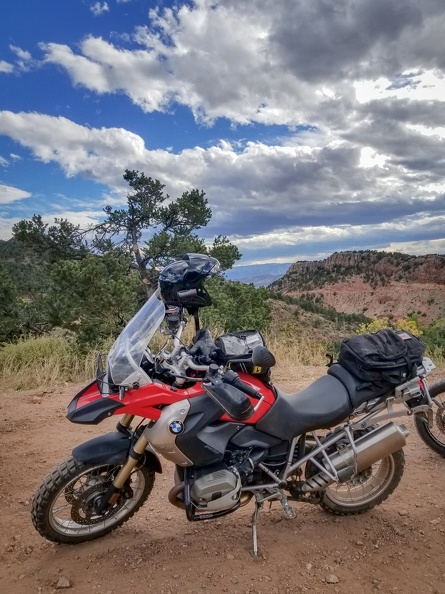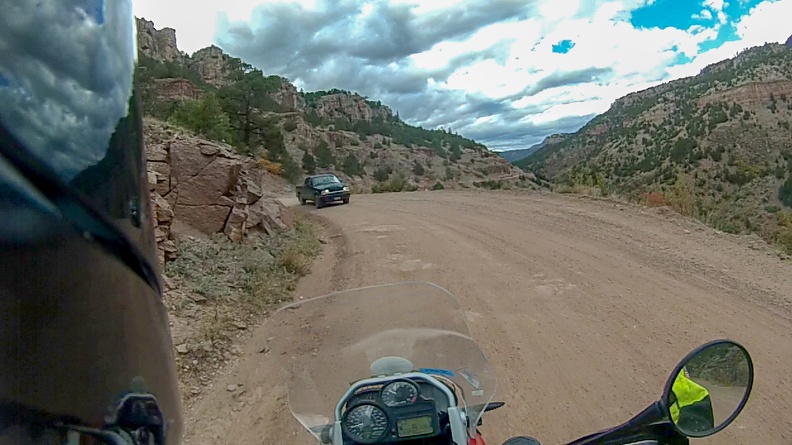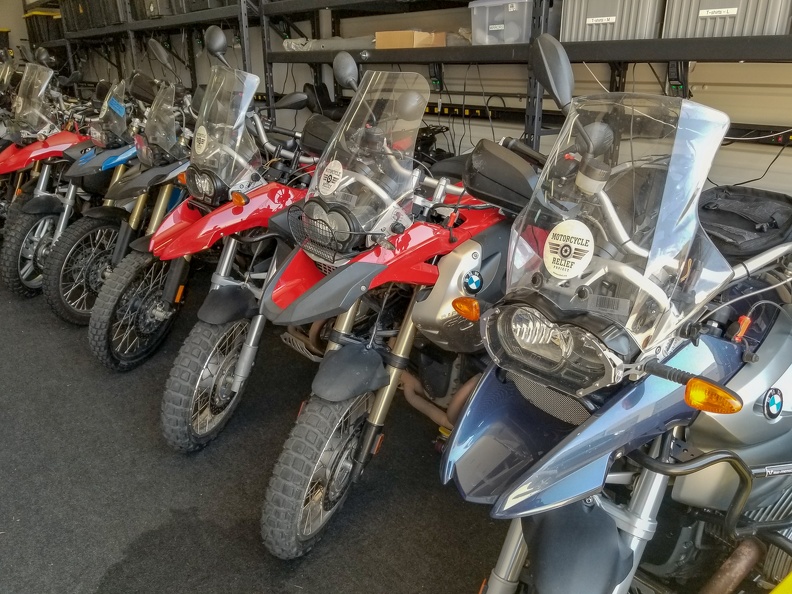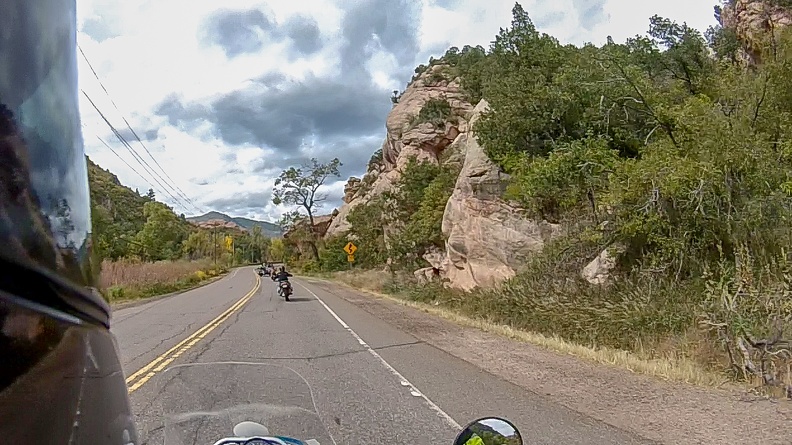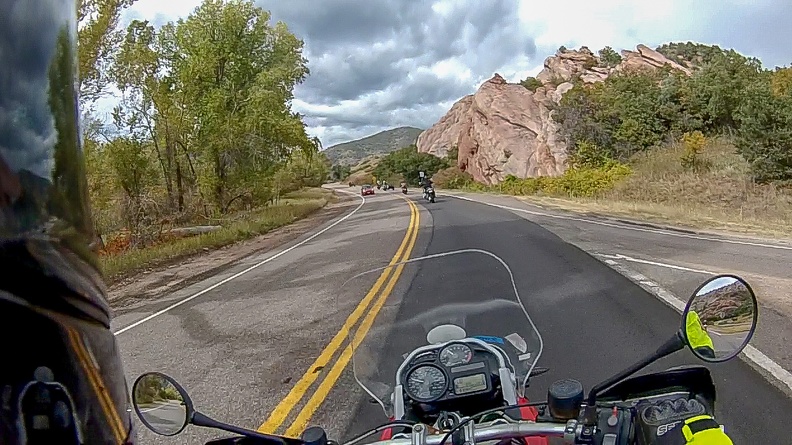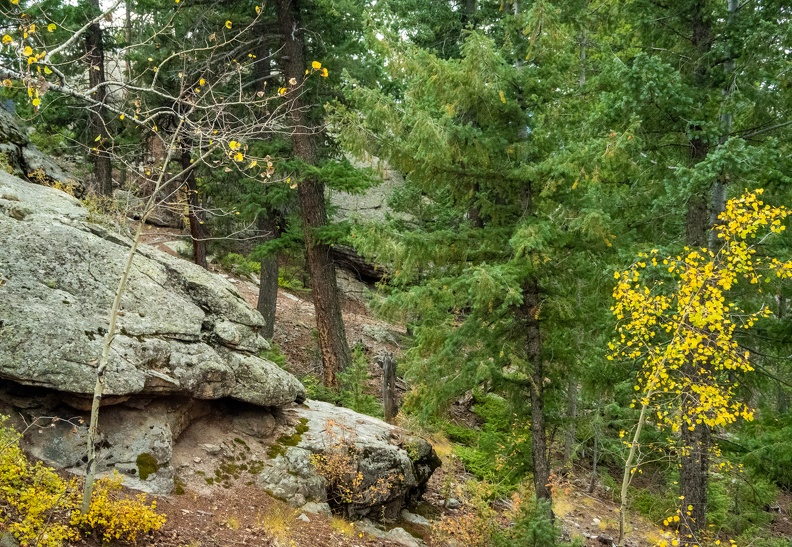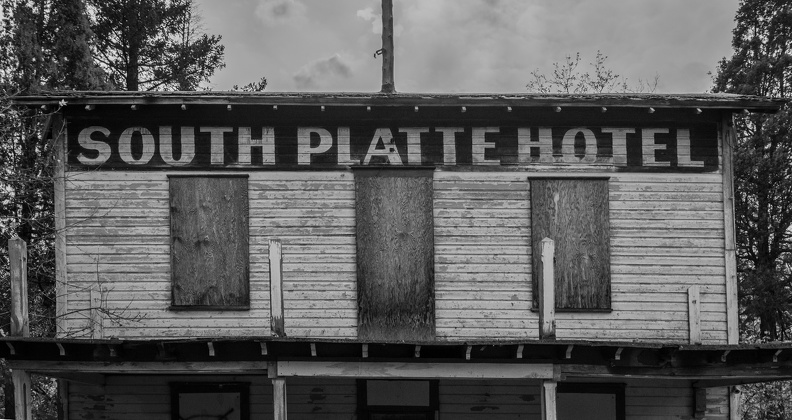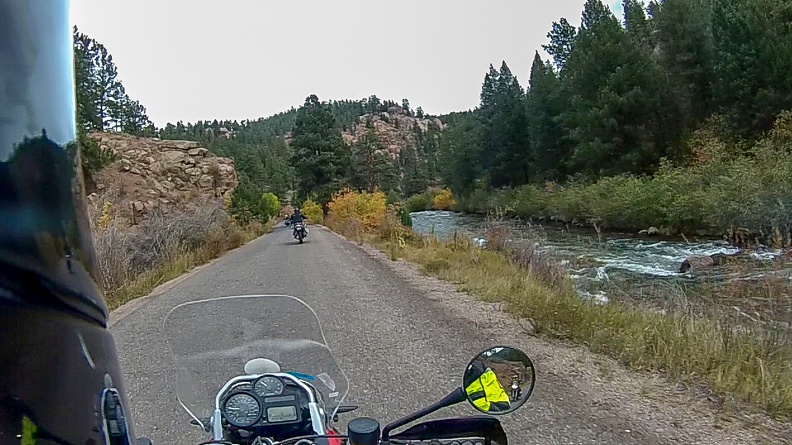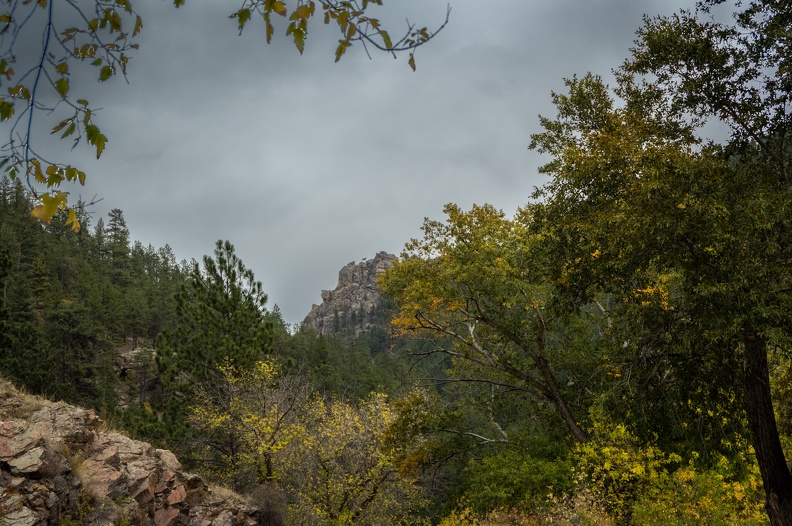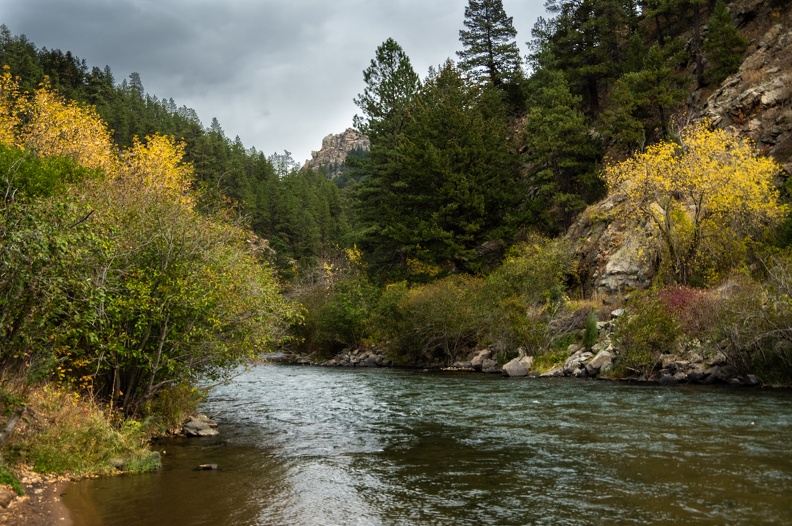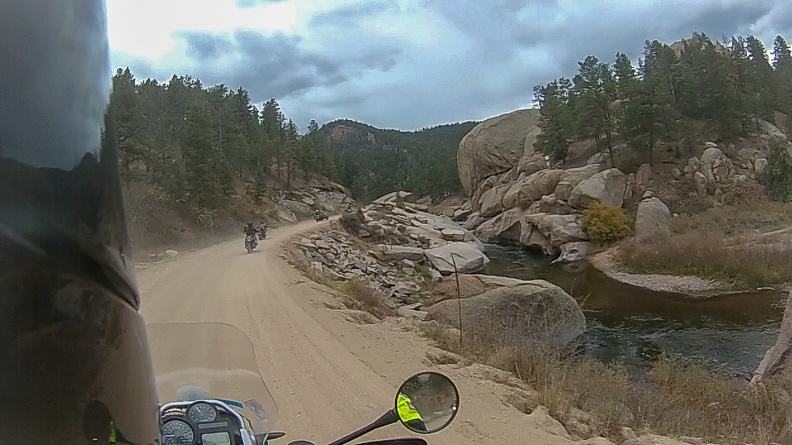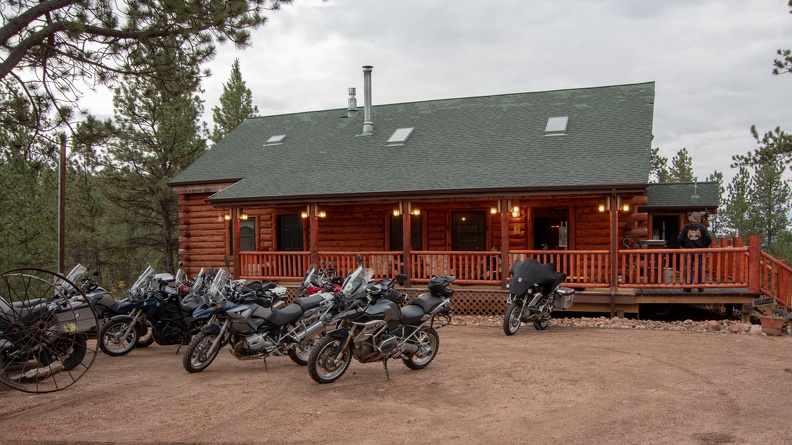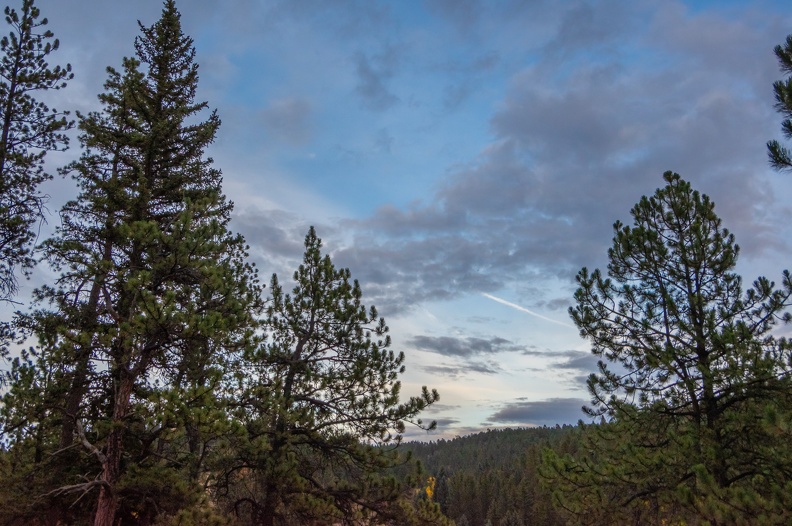Day 5: October 5, 2018
Route: Florissant, Guanella Pass, Littleton
It’s the final day of our MRP tour of Colorado – well, part of it. We packed up our belongings and loaded them in the support trailer for the ride back to Littleton.
We headed out of town on US Highway 24 through Ute Pass and back to Woodland Park. It was slightly breezy, but nothing like the previous day. We turned north on Colorado Highway 67 and headed into the Rampart Range toward Deckers.
From Deckers we followed the South Platte River on County Road 126 as it wound west then north through multiple canyons carved by various creeks. As was typical, the road was lined by dark green evergreens, yellow aspens, and brown grasses. The road followed the canyon, then climbed up and over a ridge, coming out at Pine Junction.

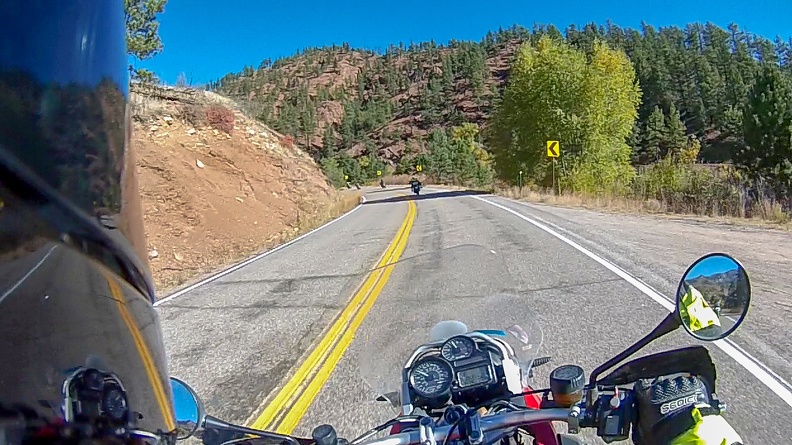

From Pine Junction we went west on US Highway 285 toward Bailey. We dropped down into Bailey, where the highway hugged the South Platte River through its canyon. Along the way, the steep mountains bordering the canyon leveled out into a strip of farmland along the river’s banks.
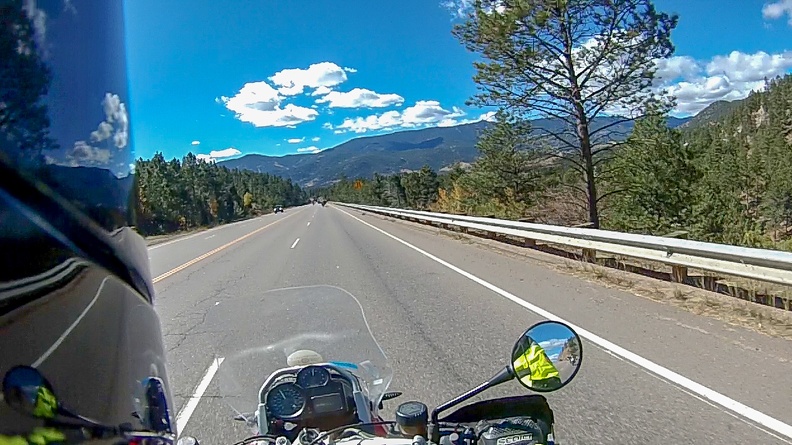

When we reached Grant, we turned north onto Guanella Pass Road to make the climb up. The pavement was very smooth and traffic was light as the road climbed the pass following Geneva Creek. We passed through several yellow tunnels of aspens on our way up.
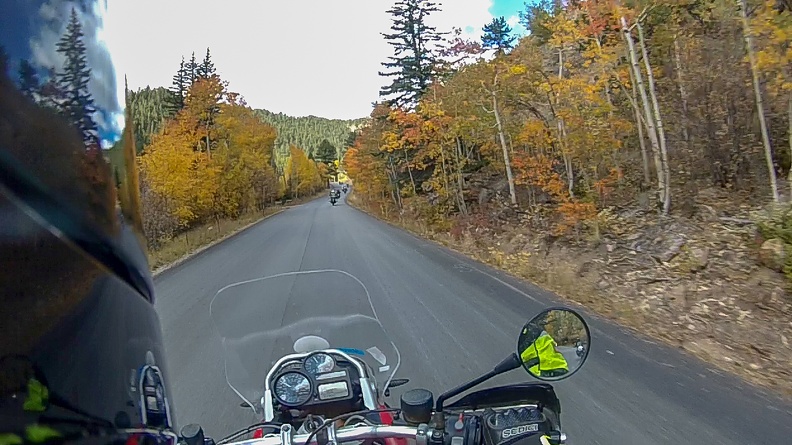
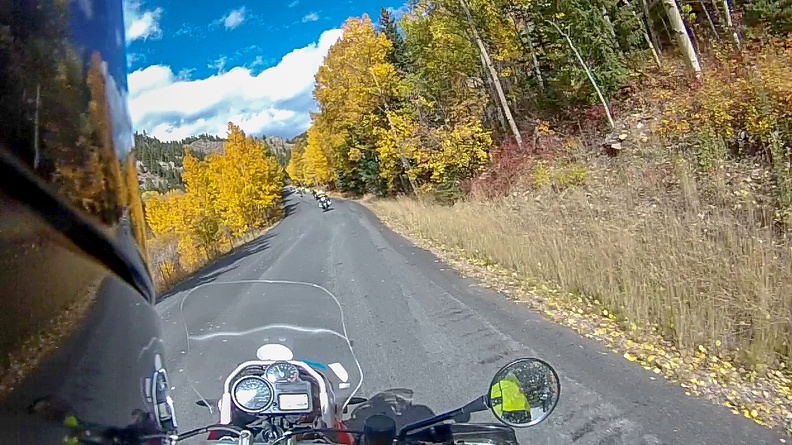
Once the road started making it final climb to the summit, I slipped back from the pack as we wound up the tight switchbacks. A cold drizzle started to fall as we went up. We passed through the tree line near the pass’s summit and we were greeted with a vast valley of brown rocks with sparse specks of green trees that managed to survive at the altitude. Several peaks were visible from the summit. To the east, Geneva Mountain, Mount Bierstadt, and Mount Evans. To the west were Squaretop Mountain, Mount Wilcox, and Decatur Mountain. As I rolled across the summit (elevation 11,669 ft), I still did not see the rest of the group. I didn’t think I was going that slow as to let them get so far ahead.
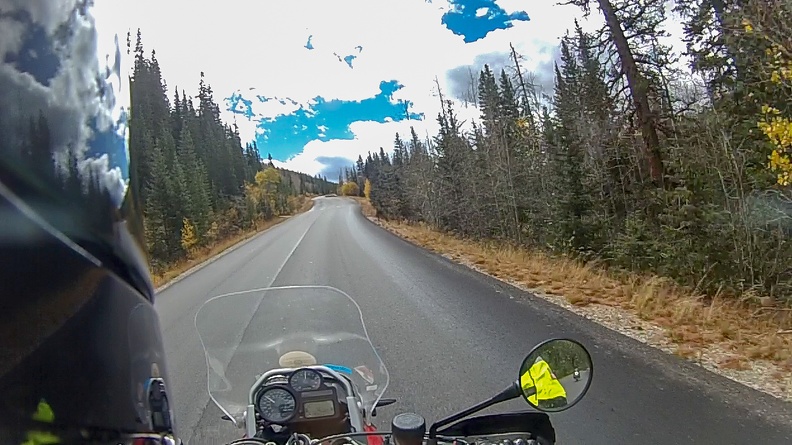
We didn’t stop at the summit because we thought the group was already on their way down. As we descended, more rain started to fall. The air temperature gauge on the GS was showing it was in the low 40s. Soon, the drizzle turned into gently floating snowflakes. It was not thick enough to stick, but I guess I can mark “riding in snow” off my list.
As I was riding down the pass, I saw a bighorn sheep along the side of the road near the Silver Dollar Lake trail head. He must have been shy because he bounded down the hill before I could stop for a picture or turn on my video camera.
The road straightened out a bit near Cabin Creek Reservoir, but I still saw no sign of the rest of the group. They must have been booking it! I arrived in Georgetown with one other rider and the support truck and stopped at the city park where we were supposed to have lunch – the group was nowhere to be found. It turns out they had stopped at the summit and had been in a parking lot that was not visible from the road.
Georgetown was a neat little town. It is the only municipality in Colorado that still operates under a charter granted by the Territory of Colorado prior to statehood; its mayor is called the Police Judge and the town council is the Board of Selectmen. At one time, Georgetown was the center or Colorado’s silver mining industry, earning the nickname the “Silver Queen of Colorado.”


The rest of the group caught up and we ate lunch in the park in the shadows of the towering mountains adjoining the Clear Creek valley. A quick stop for gas and a warming cup of coffee, and we were off on Interstate 70.
We got off the Interstate at Idaho Springs and climbed Colorado Highway 103 toward Mount Evans. The gentle curves of the highway gave way to twisty switchbacks as we climbed from 7,500 feet at Idaho Springs to 10,650 feet at the base of the Mount Evans Road. A sign at Echo Lake, the start of Mount Evans Road proclaimed the road as the “Highest Auto Road in North America,” topping out at 14,264 feet – probably the easiest way to summit a fourteener. Unfortunately for us, an early snowfall had closed the road for the season, otherwise Evans is a usual stop for the MRP.
From Echo Lake, the faster riders were given free reign to continue on and “play” on Highway 103 as it went through Squaw Pass and down into Bergen Park. I remained back to ride my own ride. The strange thing though was that even though I thought I was going really slow through some of the twists and turns of these mountain roads, when I looked down at the speedometer I was actually going faster than I though. I’m not sure if that was a product of the GS, or just me getting more comfortable on it.


As we descended down from Squaw Pass, depending on the curve of the road, panoramic glimpses of the Denver area and the western Great Plains were visible. I guess this was pretty close to being on top of the world.




We met up with the group just south of Bergen Park and turned south on Colorado Highway 74. As we rolled into Evergreen, we started to pick up afternoon commute traffic. Just south of Evergreen, we turned onto Turkey Creek Road for the final crossing of the Rampart Range before arriving at Littleton. Turkey Creek Road followed a narrow canyon with many tight curves and trees lining the road’s edge.

We hopped onto US Highway 285 for the final stretch through the Turkey Creek Canyon. As I got on the highway, a strong gust of wind hit me and blew me into the breakdown lane just as it was ending. I narrowly avoided hitting the guard rail. We emerged from the canyon near Morrison and made the final turn to MRP headquarters in Littleton.
We parked our bikes and partook in celebratory adult beverages as we unpacked the gear and put the bikes away to await the next group of veterans. The evening was capped off with a dinner with the group, MRP staff, and supporters. The evening was spent sharing our memories of the trip and joking around like old friends.

Mileage: 161, Total: 742
The MRP has a good thing going. They don’t purport to be therapy, and they aren’t trying to cure anyone, but they do give their participants tools to use to continue the healing process. It’s only one step, but I watched some of the guys go from quiet, stoic, and withdrawn to actively joking around and socializing with other members. Guys who had little success with inpatient PTSD treatment programs said they got more out of a week riding around Colorado and participating in the MRP workshops than they ever did on the inpatient programs.
If you know a veteran or first responder who might benefit from the MRP, tell them to check it out.





